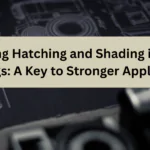Artificial Intelligence (AI) has become an integral part of modern innovation, driving advancements across industries such as healthcare, finance, autonomous systems, and even creative fields. However, as AI technology continues to evolve, so do the complexities surrounding intellectual property (IP) rights and patentability. The recent dispute between OpenAI and DeepSeek has brought these issues to the forefront, highlighting the increasing legal challenges AI developers face regarding ownership, originality, and fair usage of proprietary technologies.
Understanding the OpenAI vs. DeepSeek Dispute
OpenAI, a leading AI research and development company, has accused DeepSeek of unlawfully utilizing its proprietary technology. The allegations suggest that DeepSeek may have used OpenAI’s AI models, datasets, or algorithms without authorization, potentially violating copyright, trade secrets, and patent laws. While the exact details of the case remain undisclosed, the dispute raises critical questions about the legal ownership of AI-generated content and innovations.
Some key legal questions at the heart of this case include:
Did DeepSeek infringe upon OpenAI’s intellectual property by using proprietary AI models or algorithms?
Did DeepSeek have access to OpenAI’s trade secrets, and if so, was it legally acquired?
Does OpenAI hold patents that DeepSeek’s technology may have violated?
Are AI-generated innovations eligible for patent protection under current IP laws?
This case underscores the growing need for clearer legal frameworks to address disputes involving AI technology, particularly as AI-driven innovation becomes more widespread and valuable.
The Complexity of AI Patentability
One of the most challenging aspects of AI-related intellectual property is determining what qualifies for patent protection. AI technology often builds upon vast datasets, pre-existing algorithms, and open-source frameworks, making it difficult to establish originality and ownership.
1. Defining Inventorship in AI-Generated Innovations
Traditional patent laws require a human inventor to be listed in an application. However, AI is now capable of autonomously generating novel solutions, raising the question of whether the AI itself, the human developers, or a combination of both should be recognized as inventors.
Many patent offices worldwide have rejected AI-generated inventions on the grounds that an AI system cannot be legally designated as an inventor. However, as AI continues to play a more significant role in innovation, legal experts are exploring ways to revise patent laws to accommodate AI-driven creations while ensuring clear ownership rights.
2. Differentiating AI-Generated Work from Prior Art
A crucial requirement for patent approval is that an invention must be novel and not merely a replication of existing knowledge, known as “prior art.” However, AI models often analyze and learn from extensive datasets containing prior art, making it challenging to determine whether an AI-generated innovation is truly original or simply a recombination of pre-existing information.
For example, if an AI model develops a new method for drug discovery based on historical research data, should that be considered an innovation or an advanced form of data processing? This uncertainty complicates the patent application process for AI-driven inventions.
3. Ownership of AI Models and Training Data
AI innovations rely on massive datasets, many of which may contain copyrighted material, proprietary information, or publicly available data. The legal ownership of these datasets—and whether AI-generated content derived from them is patentable—remains a significant point of contention. Organizations like OpenAI and DeepSeek must ensure that the data they use complies with copyright laws and ethical data collection standards.
As data privacy regulations become stricter worldwide, AI companies must be vigilant in how they source, process, and implement datasets to avoid legal disputes related to data ownership.
The Role of Patent Illustrations in AI Innovations
Given the complexities of AI patentability, precise and well-documented patent illustrations are essential for securing and protecting AI-related intellectual property. These illustrations play a crucial role in:
1. Clearly Defining Novel Aspects of AI Innovations
Patent illustrations visually represent the unique components of an AI system, including its architecture, workflow, and key differentiators. This visual clarity helps patent examiners understand how the invention differs from existing technologies, strengthening its case for novelty.
2. Strengthening Legal Protection in AI Disputes
In cases like OpenAI vs. DeepSeek, well-documented patent illustrations serve as compelling evidence in legal proceedings. They provide courts and patent offices with a concrete reference to assess the originality and distinctiveness of an AI innovation.
3. Distinguishing AI Technology from Prior Art
By detailing the technical elements and unique functionalities of an AI invention, patent illustrations help establish a clear distinction between new innovations and existing prior art. This differentiation is critical in proving that an AI-related patent is not merely a derivative work of previous technologies.
For AI-driven businesses, working with skilled patent illustrators can significantly enhance their IP protection strategies by ensuring that their innovations are properly documented and legally defensible.
The Future of AI and Intellectual Property Law
As AI technology continues to advance, legal frameworks must evolve to address the growing challenges of AI-related intellectual property disputes. The OpenAI vs. DeepSeek case highlights several key areas where policymakers, AI developers, and legal experts must collaborate to establish clearer guidelines.
1. Updating Patent Laws to Address AI-Generated Inventions
Existing patent laws were primarily designed for human-led innovations, making them insufficient for addressing AI-generated inventions. Legal systems must adapt by:
Defining new regulations for AI-assisted and AI-created inventions.
Establishing clearer criteria for differentiating AI-driven innovations from prior art.
Addressing ethical concerns surrounding AI-generated content and data usage.
2. Strengthening IP Protection for AI Companies
AI firms must adopt proactive measures to safeguard their intellectual property, including:
Early Patent Filings: Given the fast-paced nature of AI advancements, securing patents early helps establish priority over competitors.
Implementing NDAs and IP Agreements: AI companies should ensure that their trade secrets and proprietary research remain protected through non-disclosure agreements (NDAs) and strong IP policies.
Regularly Monitoring for Potential Infringements: AI firms should actively monitor competitors and take legal action if their technologies are being misused or replicated without authorization.
3. Encouraging Collaboration Between AI Developers and Legal Experts
To navigate the complexities of AI and IP law, AI companies should work closely with legal experts to:
Develop robust IP protection strategies.
Ensure compliance with international patent regulations.
Address ethical and legal concerns surrounding data ownership and AI-generated content.
The OpenAI vs. DeepSeek case is a landmark dispute that underscores the growing tensions in AI and intellectual property law. As artificial intelligence continues to reshape industries, clear legal frameworks and well-documented patent illustrations will be crucial in protecting groundbreaking innovations.
AI-driven businesses must stay ahead by implementing strong IP strategies, securing patents, and maintaining ethical data usage practices. The legal landscape for AI is still evolving, and companies that proactively address these challenges will be better positioned to navigate the complexities of AI-related intellectual property disputes.
As AI continues to advance, the legal community, AI developers, and policymakers must work together to ensure that innovation is both protected and ethically managed, setting the stage for a fair and sustainable future in artificial intelligence.








